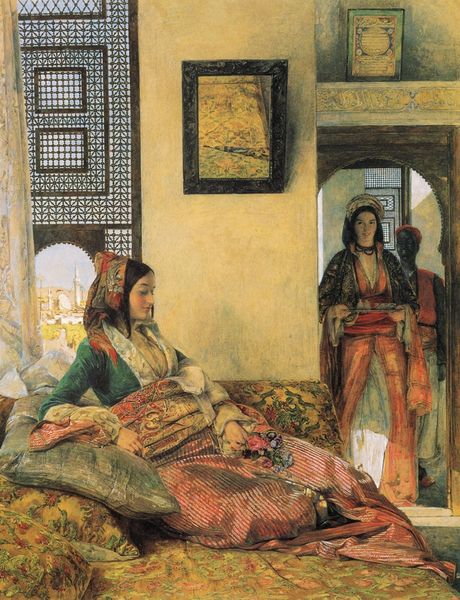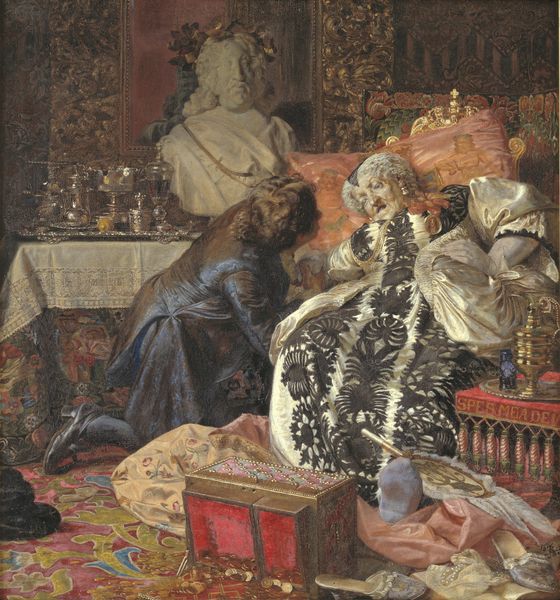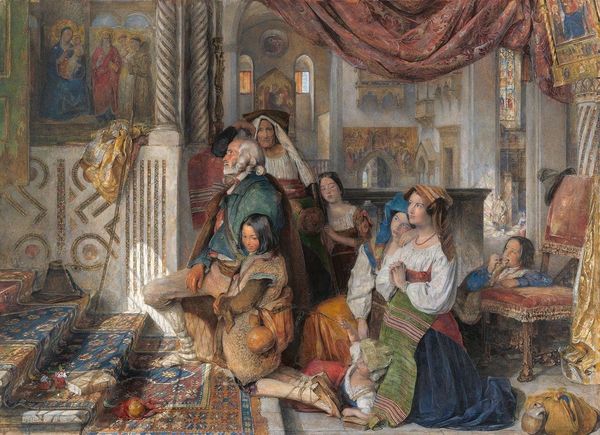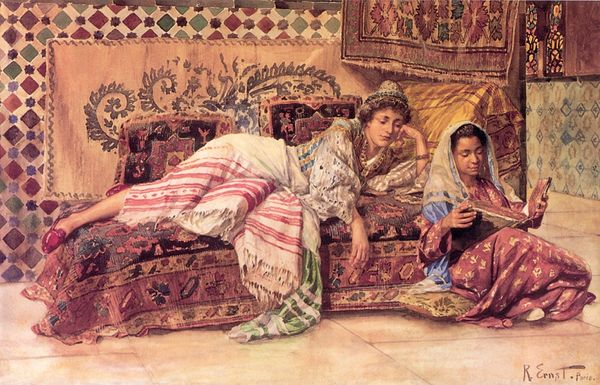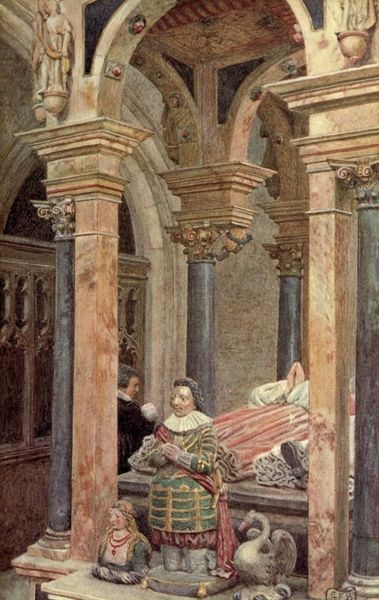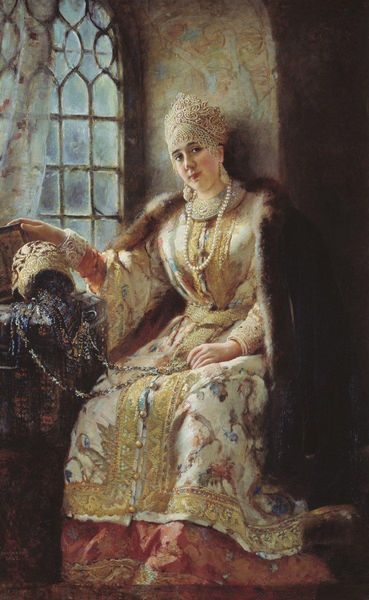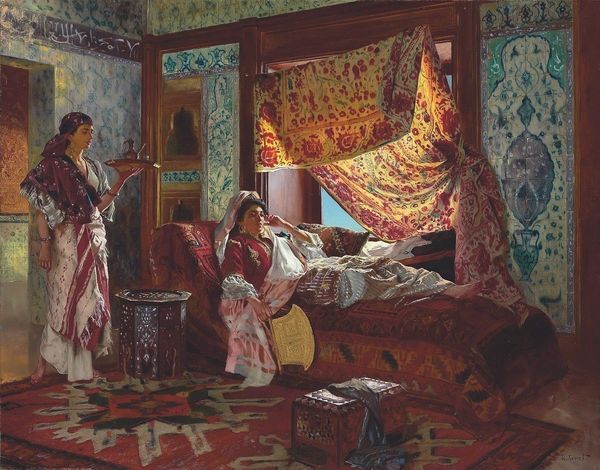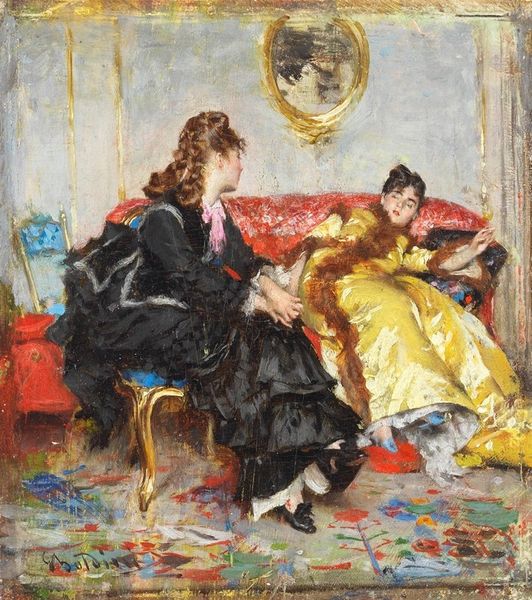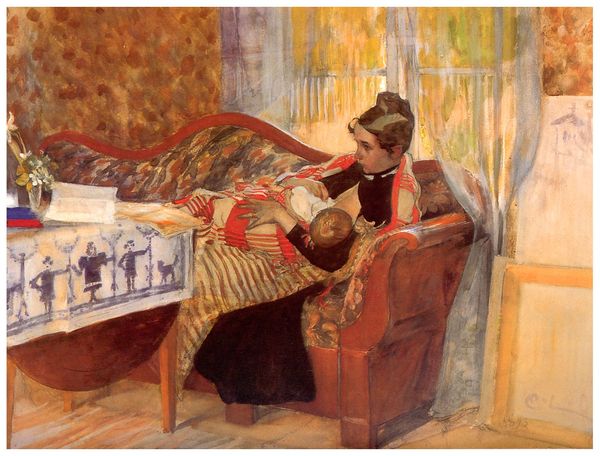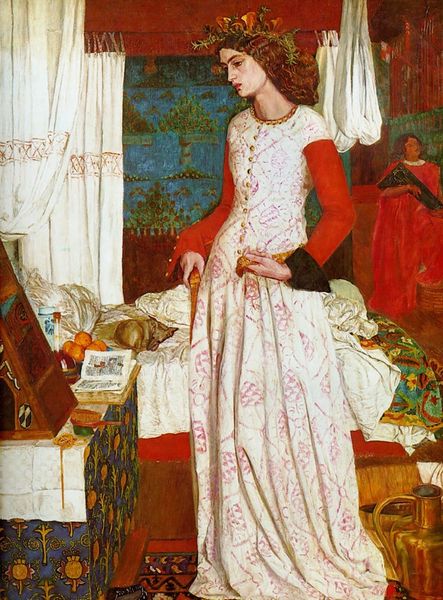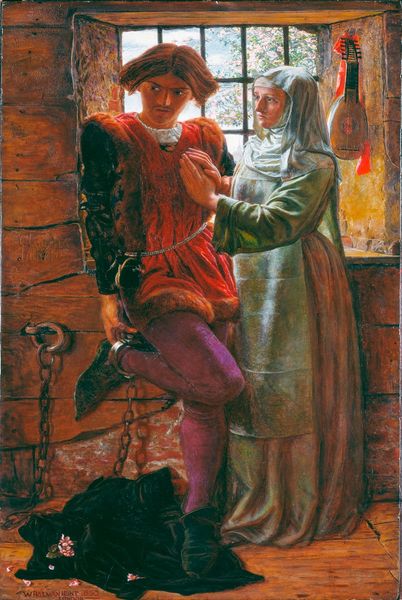
Copyright: Public domain
Curator: The languid scene depicted in John Frederick Lewis’s “Hareem Life, Constantinople," painted in 1857 with oil paint, offers a glimpse into a highly romanticized Orientalist vision. Editor: My first impression is one of visual overload. The detail is incredible, yet almost suffocating. There's so much pattern, texture, and layering. What I notice right away is how he is using the colors—lots of complementary shades such as the red in her dress and green on her clothes, as well as on the wall. Curator: Indeed, the composition is key. Lewis meticulously constructs a hierarchy within the social dynamics portrayed here. We must remember, the West's fascination and misunderstanding of the East was driven by commercial interest in exotic commodities. Consider the textiles, the elaborate garments, the interior decor; it reflects an external perspective of lavishness. The labor behind the making of those goods is invisible. Editor: I can't help but analyze the contrast between the lounging woman and the other standing by. Note how the diagonal of the couch creates movement toward the bottom left, emphasizing relaxation versus the standing female on the right. Also, observe how he renders the play of light and shadow, particularly on the fabrics—it speaks volumes. The materiality of the painting itself and the materiality it depicts converge to form a singular aesthetic experience. Curator: I think there's also a social dimension there; the labor of women whose identities are minimized. Lewis presents not just an opulent scene but also a hierarchy. And he then puts this out for consumption by a Victorian public. The production context also cannot be separated from Britain's expanding imperial ambitions. How do we read "leisure" here, what is it predicated upon? Editor: That reading opens the doors to the themes within the artwork, of course, yet the painting's intrinsic harmony holds. Look at how he frames her face by the darker section, as a painterly moment to showcase what he is really seeing. Curator: That is a vital observation to this moment's artistic rendering through brushstroke in service to both commodity exchange and social stratifications in its era, absolutely. Editor: Precisely! A testament to formal elements and societal reflections intertwining through process.
Comments
No comments
Be the first to comment and join the conversation on the ultimate creative platform.
